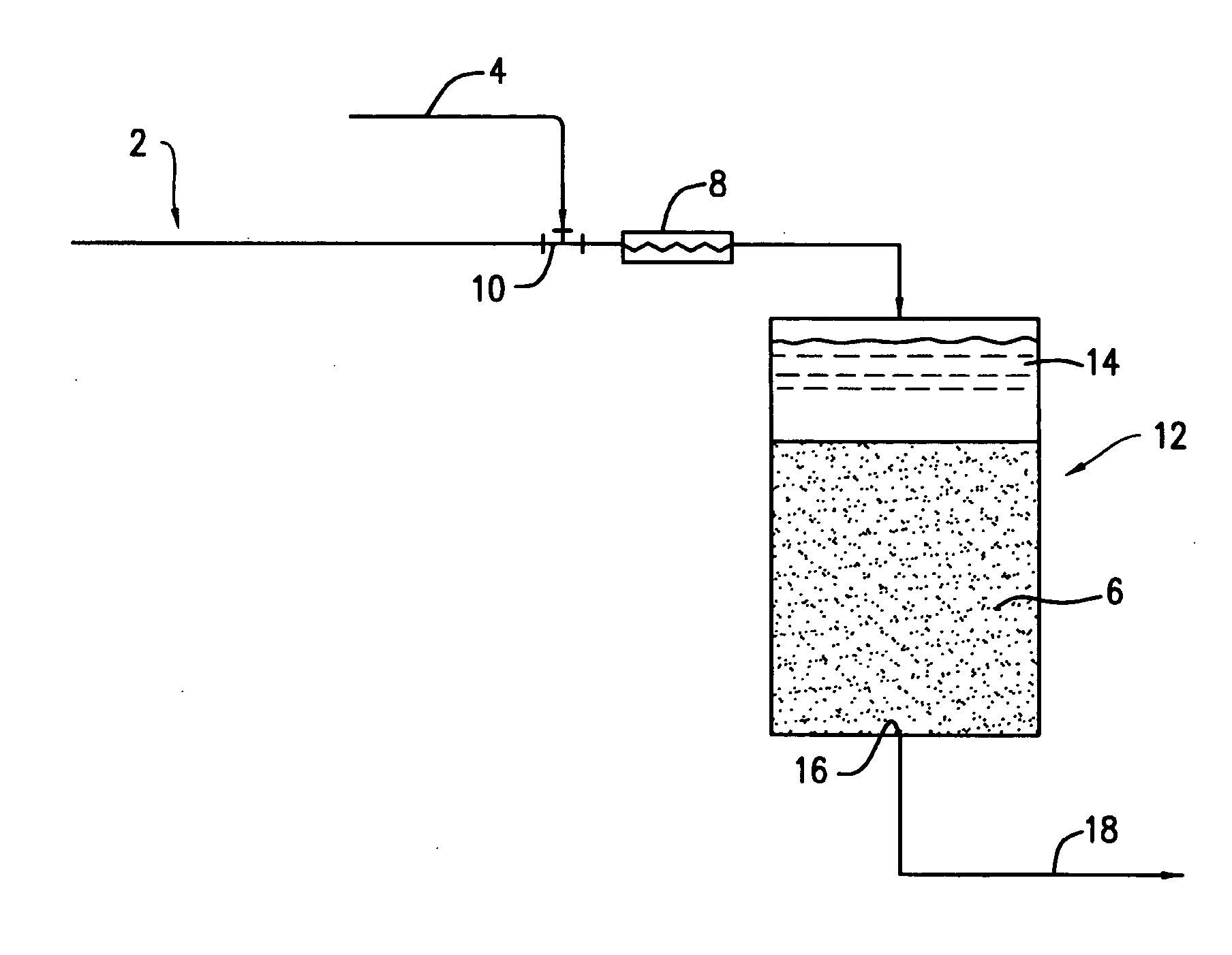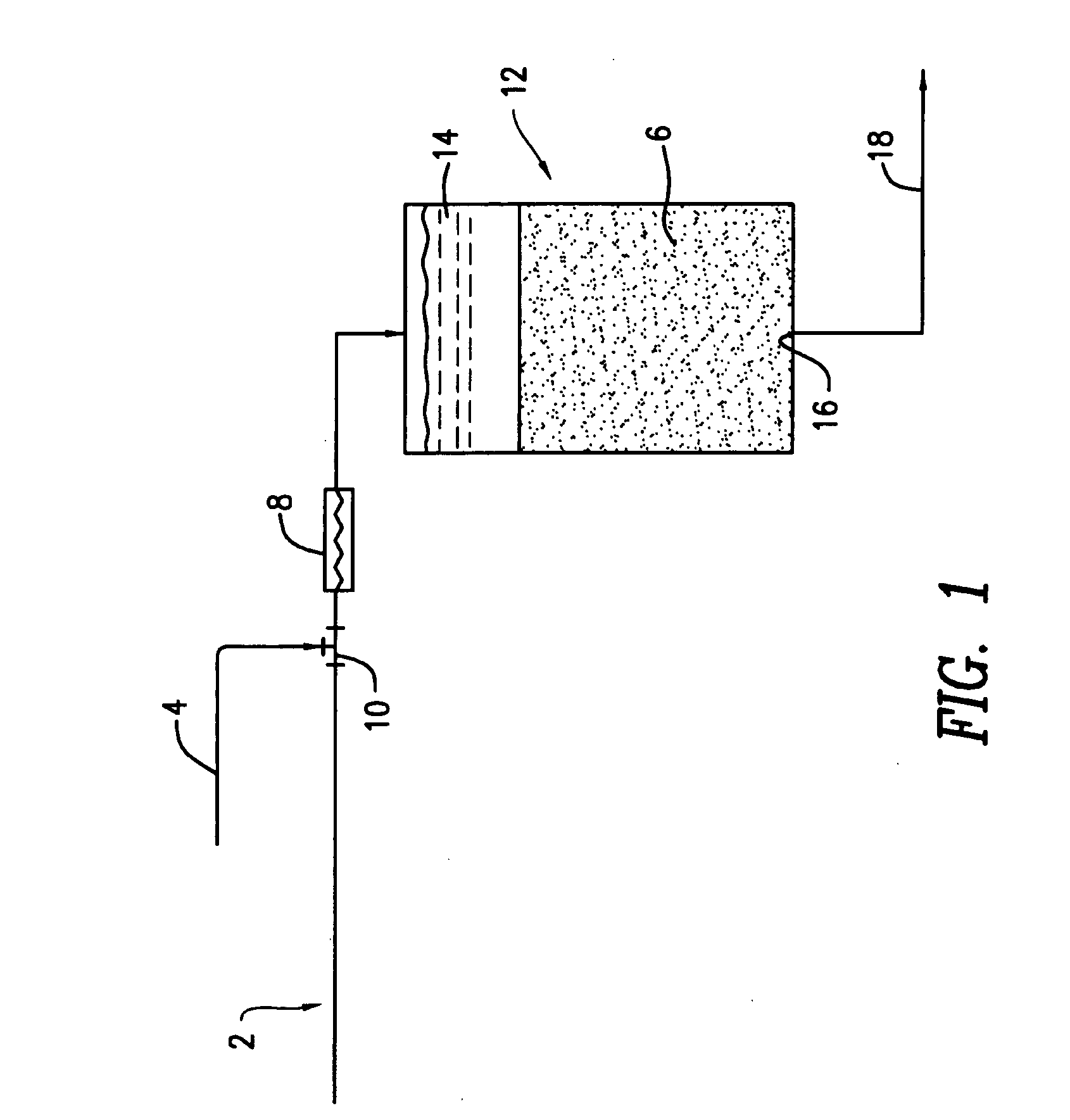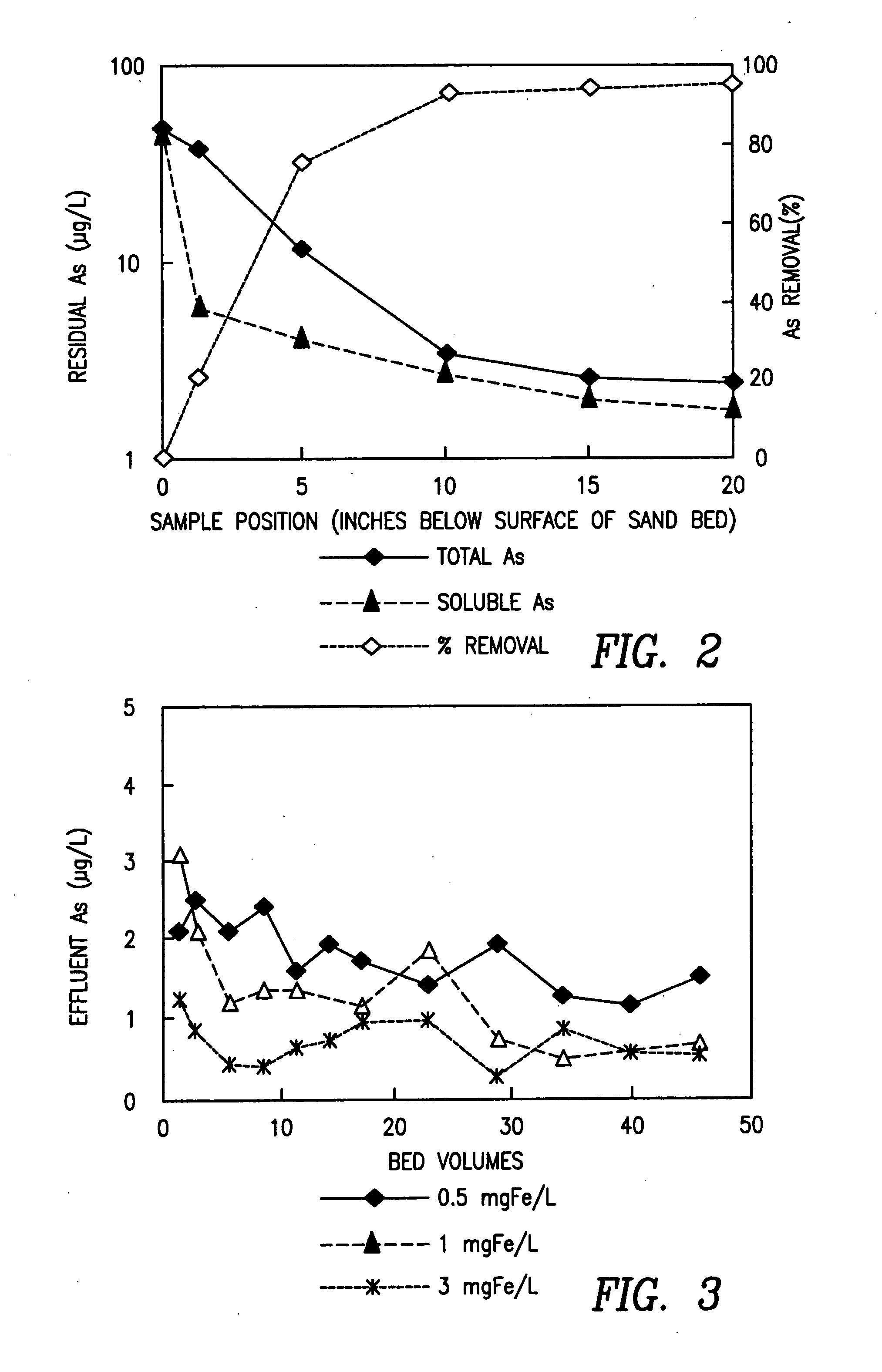Apparatus and method for water treatment by a direct co-precipitation/filtration process
- Summary
- Abstract
- Description
- Claims
- Application Information
AI Technical Summary
Benefits of technology
Problems solved by technology
Method used
Image
Examples
example 1
Arsenic Removal by Direct Co-Precipitation Filtration with Iron
[0025] Bench-scale column filtration tests were performed to evaluate the effectiveness of the direct coprecipitation filtration process in removing dissolved arsenic (As(V)) from water when dissolved iron (Fe(III)) was used as a co-precipitant. The configuration of the bench-scale DCF system used for these tests was similar to that shown in FIG. 1, with a water pump for the influent 2 and an injection pump for the co-precipitant solution 4. An in-line mixer 8 was not included in the bench-scale DCF system. The sand filter column 12 had an inside diameter of 3.0 inches (7.6 cm) and was packed with approximately 20 inches (51 cm) of quartz sand having an effective diameter of 0.35-0.60 mm and a uniformity coefficient of 1.2-1.6 (Ricci Bros. Sand Co. Inc., Port Norris, N.J.) to form the filter bed 6.
[0026] The sand filter was operated at a constant filtration rate of 3 gal / min▬ft2, providing a detention time of about 2.5...
example 2
Effect of Iron Dosage on Effluent Arsenic Concentration
[0030] Bench-scale column filtration tests were performed to examine the effect of iron (Fe(III)) dosage on arsenic removal using the DCF test apparatus of Example 1. The tests were performed on an influent consisting of tap water spiked to a concentration of 16 μg As(V) / L. In each test, the influent was dosed to a selected concentration of iron upstream of the sand filter. Tests were run at dosages of 0.5, 1.0 and 3.0 mg Fe(III) / L. Samples were collected from the effluent stream 18 throughout each test and analyzed for arsenic. Referring to FIG. 3, an iron dosage of 0.5 mg Fe(III) / L resulted in an effluent arsenic concentration of approximately 1.8 μg As(V) / L. At an iron dosage of 1 mg Fe(III) / L, the effluent arsenic concentration was reduced to about 1 μg As(V) / L. Increasing the iron dosage to 3 mg Fe(III) / L did not result in a commensurate decrease in effluent arsenic concentration below 1 μg As(V) / L.
example 3
Effect of Influent Arsenic Concentration on Arsenic Removal
[0031] Bench-scale column filtration tests were performed to evaluate the effect of the influent arsenic (As(V)) concentration on removal of arsenic by the DCF test apparatus of Example 1. Tests were performed on tap water samples spiked to arsenic concentrations of 16, 50, 90 and 180 μg As(V) / L, respectively. A separate test was performed using contaminated groundwater having an arsenic concentration of 70 μg As(V) / L. The influent streams were dosed to an iron concentration of 1 mg Fe(III) / L in each test.
[0032] Referring to FIG. 4, the DCF process reduced the effluent arsenic concentrations to about 1 μg As(V) / L in the 16 and 50 μg As(V) / L samples after less than 10 bed volumes of influent were passed through the sand filter. The effluent arsenic concentration increased to about 3 μg As(V) / L when the influent arsenic concentration was increased to 90 μg As(V) / L. A larger volume of influent, about 20 bed volumes, was treat...
PUM
 Login to View More
Login to View More Abstract
Description
Claims
Application Information
 Login to View More
Login to View More - R&D
- Intellectual Property
- Life Sciences
- Materials
- Tech Scout
- Unparalleled Data Quality
- Higher Quality Content
- 60% Fewer Hallucinations
Browse by: Latest US Patents, China's latest patents, Technical Efficacy Thesaurus, Application Domain, Technology Topic, Popular Technical Reports.
© 2025 PatSnap. All rights reserved.Legal|Privacy policy|Modern Slavery Act Transparency Statement|Sitemap|About US| Contact US: help@patsnap.com



